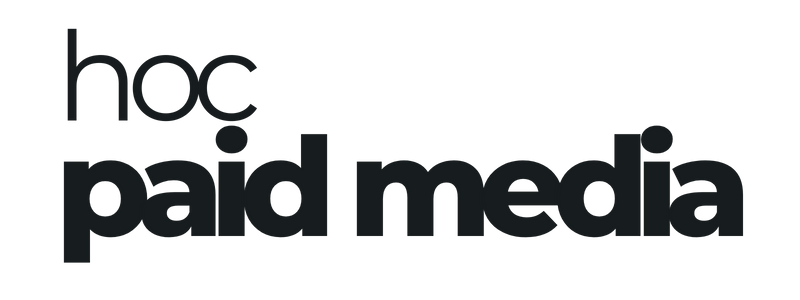The Most Important PPC Metrics You Should Be Tracking in 2025
Success in pay-per-click (PPC) advertising isn’t just about generating clicks—it’s about tracking the right metrics, understanding the data, and making informed decisions to maximise return on investment (ROI). With so many performance indicators available, it’s easy to get lost in the numbers.
But which metrics really matter? If you want to improve efficiency, lower costs, and increase conversions, these are the key PPC metrics you should be focusing on in 2025.
1. Click-Through Rate (CTR): The Measure of Ad Relevance
Click-through rate (CTR) tells you the percentage of people who click on your ad after seeing it. It’s calculated by dividing clicks by impressions, then multiplying by 100.
Why CTR Matters:
- A high CTR means your ad resonates with users and aligns with their search intent.
- In Google Ads, CTR plays a key role in determining Quality Score, which affects your ad rank and cost-per-click (CPC).
- Generally, a CTR above 5% is strong for search ads, but benchmarks vary by industry.
How to Improve CTR:
✔ Write compelling, action-driven ad copy.
✔ Use high-intent keywords that match user search behaviour.
✔ Test multiple ad variations to see what works best.
2. Cost Per Click (CPC): Controlling Your Ad Spend
Cost per click (CPC) tells you how much you pay for each click on your ad. Keeping CPC in check ensures you’re not overspending on clicks that don’t convert.
Why CPC Matters:
- A high CPC can drain your budget quickly, especially in competitive industries.
- Lowering CPC while maintaining conversion rates helps increase profitability.
How to Reduce CPC:
✔ Improve Quality Score by optimising ad relevance and landing page experience.
✔ Target long-tail keywords, which are often less competitive and more cost-effective.
✔ Use automated bidding strategies, such as Google’s Smart Bidding, to maximise efficiency.
Diversifying your search networks for running ads may also make sense when seeking optimal CPSs. Bing Ads can often unlock hidden opportunities for brands running paid search ads, thanks to less competitive publishers on their network.
3. Conversion Rate (CVR): Turning Clicks into Customers
Conversion rate (CVR) measures the percentage of ad clicks that result in a desired action, such as a form submission, purchase, or phone call.
Why CVR Matters:
- A high CTR is meaningless if users don’t take action after clicking your ad.
- CVR helps gauge how effective your ad and landing page are at driving conversions.
How to Improve CVR:
✔ Align your ad messaging with your landing page content.
✔ Remove distractions and make your CTA clear and compelling.
✔ Use A/B testing to refine landing page elements (headlines, buttons, and copy).
4. Cost Per Conversion (CPA): The Key to Budget Efficiency
Cost per conversion (CPA), also known as cost per acquisition, measures how much you’re spending to acquire a new lead or customer. It’s calculated by dividing total ad spend by the number of conversions.
Why CPA Matters:
- If your CPA is higher than your customer’s lifetime value (LTV), your campaign is losing money.
- A low CPA means your ads are bringing in leads or sales at an efficient cost.
How to Lower CPA:
✔ Improve ad relevance and target high-intent users.
✔ Use negative keywords to eliminate irrelevant clicks.
✔ Optimise bidding strategies to focus on conversion-driven actions.
5. Quality Score: The Metric That Affects Everything
Quality Score is Google’s rating (on a scale of 1 to 10) of your ad relevance, expected CTR, and landing page experience.
Why Quality Score Matters:
- A higher Quality Score reduces CPC and improves ad rank without needing to increase bids.
- Google prioritises ads with high Quality Scores, meaning they get more impressions at a lower cost.
How to Improve Quality Score:
✔ Ensure ad copy matches targeted keywords.
✔ Use specific, high-intent keywords instead of broad, generic ones.
✔ Improve landing page relevance and user experience.
6. Impression Share: Are You Losing Out on Visibility?
Impression Share measures the percentage of available impressions your ad is receiving. A low Impression Share suggests you’re losing visibility to competitors.
Why Impression Share Matters:
- If your Impression Share is low, you may need to increase bids or refine targeting.
- Losing Impression Share due to ad rank means you should improve CTR and Quality Score.
How to Improve Impression Share:
✔ Increase your ad budget if needed.
✔ Improve ad rank by refining keywords and Quality Score.
✔ Use exact match keywords to focus on the most valuable searches.
7. Return on Ad Spend (ROAS): The Ultimate Profitability Metric
Return on ad spend (ROAS) measures how much revenue your PPC campaigns generate for every pound spent. It’s calculated by dividing revenue by ad spend.
Why ROAS Matters:
- A ROAS of 4:1 (spending £500 to generate £2,000) is generally considered strong.
- Tracking ROAS helps optimise budget allocation, focusing on high-performing campaigns.
How to Increase ROAS:
✔ Shift budget toward campaigns with the highest returns.
✔ Optimise landing pages to increase conversion rates.
✔ Refine ad targeting to eliminate wasted spend.
8. Bounce Rate: Are Your Visitors Engaged?
Bounce rate is the percentage of visitors who leave your landing page without taking action. A high bounce rate can indicate poor user experience or ad mismatch.
Why Bounce Rate Matters:
- If users bounce quickly, they either didn’t find what they expected or the page didn’t load properly.
- A high bounce rate can lower Quality Score and increase CPC.
How to Reduce Bounce Rate:
✔ Ensure landing pages match ad messaging.
✔ Optimise for fast load times and mobile users.
✔ Remove unnecessary pop-ups or distractions.
9. Ad Engagement Metrics: Understanding User Behaviour
Beyond CTR, other engagement metrics like time on page, scroll depth, and secondary clicks provide insights into how users interact with your landing page.
Why Engagement Metrics Matter:
- High engagement suggests strong ad relevance and user interest.
- Low engagement indicates friction in the user journey.
How to Improve Engagement:
✔ Add clear CTAs that encourage users to take the next step.
✔ Use heatmaps to analyse user behaviour.
✔ Test different page layouts and content formats.
10. Lifetime Value (LTV) vs. Customer Acquisition Cost (CAC): The Bigger Picture
While not strictly a PPC metric, comparing LTV with CAC ensures your campaigns are profitable in the long term.
Why LTV vs. CAC Matters:
- If CAC exceeds LTV, you’re spending more to acquire a customer than they’re worth.
- A healthy ratio (e.g., 3:1 LTV to CAC) ensures campaign sustainability.
How to Balance LTV and CAC:
✔ Focus on high-value customers instead of one-time conversions.
✔ Improve customer retention strategies to increase LTV.
✔ Reduce CAC by refining ad targeting and messaging.
Bringing It All Together: Focus on What Matters
PPC success isn’t about tracking every available metric—it’s about focusing on the right ones.
- CTR, Quality Score, and CPC help optimise ad efficiency.
- Conversion Rate, CPA, and ROAS measure profitability.
- Impression Share and Bounce Rate highlight opportunities for improvement.
By consistently analysing, adjusting, and refining your PPC strategy, you’ll not only reduce wasted spend but also drive higher-quality traffic and stronger business results in 2025.
























